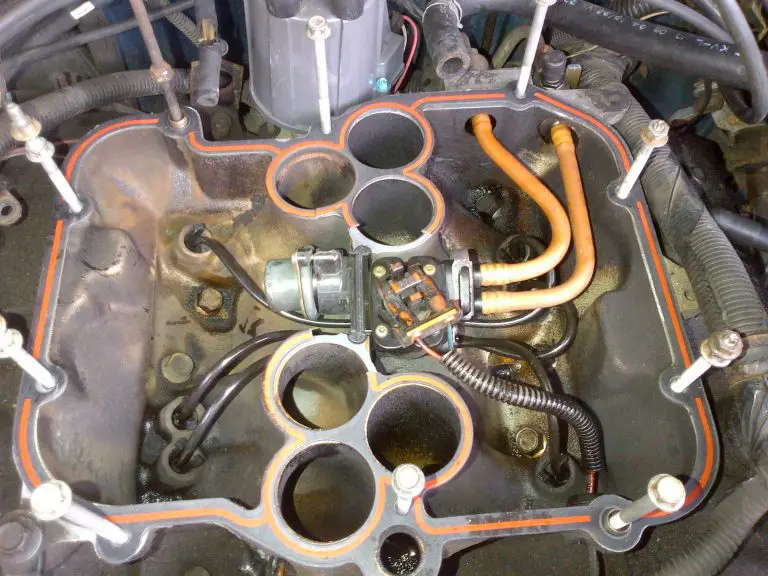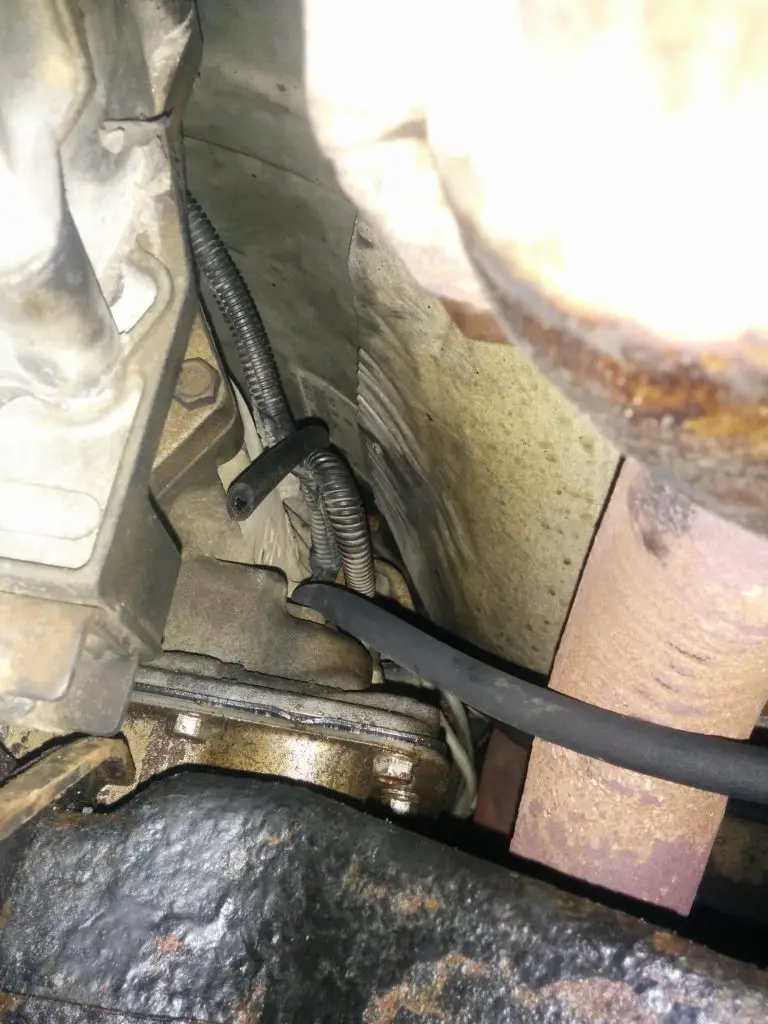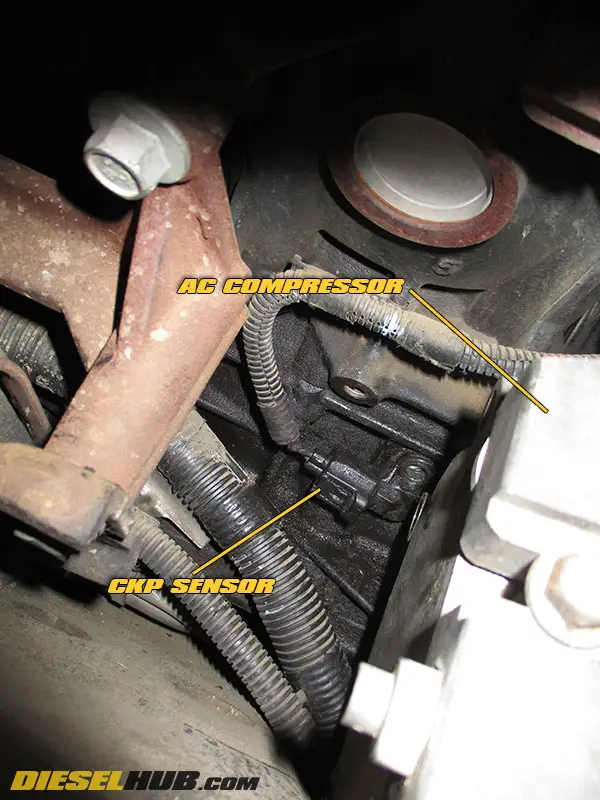5.3 Vortec Fuel Pressure Regulator Symptoms: A Comprehensive Guide
Maintaining a healthy fuel system is vital for the optimal performance of your 5.3 Vortec engine. Among the critical components responsible for fuel delivery and pressure regulation is the fuel pressure regulator. However, like any other part, this component is prone to wear and tear, potentially leading to a range of symptoms that can impact your engine’s performance.
In this comprehensive guide, we will delve into the common symptoms associated with a faulty fuel pressure regulator in a 5.3 Vortec engine. By understanding these indicators, you’ll be better equipped to diagnose issues early on and take appropriate measures to rectify them, ensuring your engine operates smoothly.
We will explore various signs that might indicate a malfunctioning fuel pressure regulator, including fluctuating fuel pressure, poor engine performance, excessive fuel consumption, black smoke from the exhaust, and starting or idling difficulties. By familiarizing yourself with these symptoms, you can promptly address potential problems, saving yourself time, money, and unnecessary frustrations.
Whether you’re a seasoned automotive enthusiast or a DIY mechanic, this guide will provide valuable insights into identifying and resolving fuel pressure regulator issues in your 5.3 Vortec engine. Let’s dive in and empower ourselves with the knowledge needed to keep our engines running at their best!
List Of 5.3 Vortec Fuel Pressure Regulator Symptoms
Fluctuating Fuel Pressure
One of the primary symptoms of a faulty fuel pressure regulator in a 5.3 Vortec engine is inconsistent fuel pressure. You may notice the fuel pressure gauge fluctuating or showing irregular readings. This can result in engine performance issues such as surging or hesitation during acceleration.
Poor Engine Performance
A failing fuel pressure regulator can negatively impact the engine’s performance. You may experience a lack of power, rough idling, misfires, or a noticeable decrease in overall engine efficiency. The engine may struggle to maintain a consistent speed or may feel sluggish during acceleration.
Excessive Fuel Consumption
If the fuel pressure regulator is not functioning correctly, it can cause an incorrect fuel-to-air ratio, leading to increased fuel consumption. You may find that you need to refill the fuel tank more frequently, despite driving the same distance or under similar conditions as before.
Black Smoke from Exhaust
A malfunctioning fuel pressure regulator can cause a rich fuel mixture, resulting in the emission of black smoke from the exhaust pipe. This indicates that the engine is burning an excessive amount of fuel, which can be harmful to both the environment and the engine’s longevity.
Starting or Idling Difficulties
A failing fuel pressure regulator can lead to difficulties starting the engine, especially after it has been sitting idle for a while. You may experience extended cranking times or even occasional engine stalling. The engine may also exhibit rough idling or inconsistent idle speed.
What To Do When You Detect A Bad 5.3 Vortec Fuel Pressure Regulator?
If you detect a bad fuel pressure regulator in your 5.3 Vortec engine, it’s important to take appropriate action to address the issue promptly. Here are the steps you can follow:
Confirm the diagnosis
Before proceeding with any repairs or replacements, ensure that the fuel pressure regulator is indeed the cause of the problem. Consult a professional mechanic or perform a thorough diagnosis to eliminate any other potential issues.
Gather the necessary tools and replacement parts
If you decide to replace the fuel pressure regulator yourself, gather the required tools, such as wrenches, socket set, and a fuel pressure gauge. Additionally, purchase a new fuel pressure regulator that is compatible with your 5.3 Vortec engine.
Disconnect the battery
Prior to any work on the fuel system, disconnect the negative terminal of the battery to prevent accidental sparks or fuel system damage.
Relieve fuel system pressure
To ensure safety, relieve the pressure in the fuel system by locating the fuel pump relay or fuse and removing it. Start the engine and let it run until it stalls, which will depressurize the fuel lines.
Remove and replace the fuel pressure regulator
Locate the fuel pressure regulator, which is typically situated on the fuel rail or fuel line. Carefully disconnect the fuel lines and electrical connections attached to the regulator. Remove the old regulator and install the new one in its place, reconnecting the fuel lines and electrical connections securely.
Test and verify
After installing the new fuel pressure regulator, reassemble any components you removed. Reconnect the negative terminal of the battery and start the engine. Monitor the fuel pressure gauge and check for any signs of the previously detected symptoms. If the issue is resolved, and the fuel pressure remains stable within the manufacturer’s specifications, you have successfully addressed the problem.
Seek professional assistance if needed
If you are uncertain about performing the replacement yourself or if the symptoms persist after the replacement, it’s advisable to consult a professional mechanic. They can provide expert guidance and ensure proper diagnosis and resolution of the fuel pressure regulator issue.
Is Replacing A Bad 5.3 Vortec Fuel Pressure Regulator Expensive?
The cost of replacing a bad 5.3 Vortec fuel pressure regulator can vary depending on several factors. Here are some factors that can influence the overall expense:
1. DIY vs. Professional Repair
If you have the necessary skills and tools, you can attempt to replace the fuel pressure regulator yourself, which can save on labor costs. However, if you’re not confident or experienced in automotive repairs, it’s recommended to seek professional assistance, which will incur labor charges.
2. Genuine OEM or Aftermarket Part
The type of fuel pressure regulator you choose can affect the cost. Genuine OEM (Original Equipment Manufacturer) parts are typically more expensive but offer a higher level of quality and reliability. On the other hand, aftermarket parts can be more budget-friendly but may vary in terms of quality and longevity.
3. Brand and Supplier
Different brands and suppliers may have varying price points for fuel pressure regulators. It’s worth researching reputable suppliers and comparing prices to find the best deal without compromising on quality.
4. Additional Repairs or Services
In some cases, the fuel pressure regulator issue may be a symptom of an underlying problem within the fuel system. If additional repairs or services are required to address those issues, it can add to the overall cost.
As a rough estimate, the cost of a fuel pressure regulator for a 5.3 Vortec engine can range from around $50 to $200 or more, depending on the factors mentioned above. Labor charges, if applicable, can vary depending on the mechanic’s hourly rate and the complexity of the repair.
To get a more accurate idea of the specific costs involved, it’s recommended to consult with local mechanics or repair shops, as they can provide a detailed breakdown of the expenses based on your specific situation.
How Often Should You Service 5.3 Vortec Fuel Pressure Regulator?
The fuel pressure regulator in a 5.3 Vortec engine is a crucial component of the fuel system. While it does not require regular maintenance or servicing, it is still subject to wear and potential failure over time. However, there are no specific mileage or time intervals recommended for servicing the fuel pressure regulator in the 5.3 Vortec engine.
Instead, it is important to be vigilant and pay attention to any symptoms or issues that may indicate a malfunctioning fuel pressure regulator. If you notice symptoms such as fluctuating fuel pressure, poor engine performance, excessive fuel consumption, black smoke from the exhaust, or starting/idling difficulties, it is advisable to have the fuel pressure regulator inspected and, if necessary, replaced.
Regularly scheduled maintenance for your vehicle, such as tune-ups and fuel system inspections, can also help catch any potential issues with the fuel pressure regulator before they worsen. During these maintenance visits, it is a good idea to have a qualified mechanic inspect the fuel system, including the fuel pressure regulator, to ensure it is functioning properly.
Ultimately, the best approach is to monitor your vehicle’s performance and address any fuel system issues promptly. By staying attentive to symptoms and performing regular maintenance, you can help ensure the longevity and reliability of your 5.3 Vortec fuel pressure regulator.
FAQ:
1. Can a fuel pressure regulator be bad and not leak?
Yes, a fuel pressure regulator can be bad and not leak. While fuel leaks are a common symptom of a faulty regulator, it is possible for the regulator to malfunction without any noticeable leaks. The regulator may fail to maintain the proper fuel pressure, leading to issues like fluctuating fuel pressure, poor engine performance, excessive fuel consumption, or starting difficulties. It’s important to consider these symptoms even if there are no visible fuel leaks present.
2. Can a car run without a fuel pressure regulator?
No, a car cannot run without a fuel pressure regulator. The fuel pressure regulator is a vital component that ensures the correct fuel pressure is maintained within the fuel system. Without a properly functioning regulator, the fuel pressure may become too high or too low, leading to engine performance issues and potential damage. The regulator helps regulate the fuel flow to provide the appropriate amount of fuel to the engine. Without it, the engine would not receive the proper fuel supply and would not run efficiently, if at all.
3. Can a fuel pressure regulator cause high fuel consumption?
Yes, a faulty fuel pressure regulator can cause high fuel consumption. The fuel pressure regulator plays a critical role in maintaining the correct fuel-to-air ratio in the engine. If the regulator malfunctions, it may allow excess fuel to be delivered to the engine, resulting in a rich fuel mixture. This rich mixture leads to inefficient combustion and increased fuel consumption. If you notice a sudden increase in fuel consumption without any other apparent causes, a faulty fuel pressure regulator could be a possible culprit.



